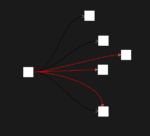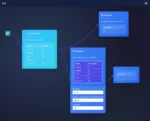
by tyler garrett | Jun 6, 2025 | Data Processing
In today’s data-driven world, distributed processing systems have become indispensable tools, enabling organizations to efficiently scale operations, process vast datasets, and gain timely insights. However, lurking beneath the surface of distributed computations lies an often-overlooked threat—data skew. Like an iceberg partially submerged beneath the ocean’s surface, data skew represents unseen inefficiencies and uneven workloads that challenge even seasoned data engineering teams. Left unchecked, data skew can cripple performance, inflate operational costs, and compromise analytics accuracy, no matter how advanced your infrastructure may seem. Understanding data skew, its implications, and effectively mitigating its impacts is key for organizations serious about leveraging data assets strategically. Let’s shine a definitive light on this silent disruptor, assess the hidden costs it carries, and explore proactive steps to ensure your distributed processing systems run smoothly and efficiently.
Understanding the Concept of Data Skew
At its core, data skew describes the uneven distribution of datasets across nodes within a distributed processing system, such as Apache Spark, Hadoop, or other cloud-based data frameworks. Ideally, a balanced distribution would allow nodes to equally share computational responsibilities, maximizing resource utilization and delivering peak performance. Unfortunately, the real world rarely sticks to theoretical ideals. Data skew arises when certain keys, values, or partitions within the data occupy significantly more storage or computational resources than others. This imbalance triggers disproportionate stress on specific cluster nodes, causing bottlenecks, extended query completion times, and unpredictable performance spikes.
One common form of skew is key-based skew, where certain values within a dataset become heavily concentrated. Imagine trying to process sales orders online, and you notice overwhelming demand for a particular product that dwarfs requests for others. Without adequate preparation or optimization, your processing nodes assigned that specific product dataset become overloaded, creating critical inefficiencies. In scenarios involving real-time analytics like those explained in our comprehensive guide to real-time data processing with Node.js, such skew can lead to severe latency or even complete system outages when not anticipated and managed proactively.
Other forms of skew include partition skew, in which specific partitions receive outsized data loads due to flawed or imbalanced partitioning logic, and timing skew, in which datasets arrive asynchronously at different speeds. Each of these variations carries a hidden cost in decreased productivity due to slowed system responses, reduced resource efficiency, and unintended downtime—consequences that directly impact organizational competitiveness.
The Direct and Indirect Costs of Ignoring Data Skew
Organizations might underestimate the financial and opportunity cost of unaddressed data skew. Directly, the most obvious impact is performance degradation. When datasets are imbalanced, overburdened nodes slow system throughput significantly, creating situations where otherwise efficient processes become major resource drains. Long-running batch processing jobs result in higher infrastructure costs, particularly in cloud environments where organizations pay per processing time and compute usage. In extreme cases, data skew can cause certain nodes to exhaust available resources completely, triggering costly cluster outages, layoffs, or forcing emergency hardware provisioning.
Indirectly, data skew substantially impacts analytics accuracy and timeliness. Analytics tools reliant on distributed processing systems depend on evenly distributed datasets to present timely visualizations and actionable insights. When skewed data introduces unexplained delays or unscheduled bottlenecks, downstream analytical display engines can incorrectly depict trends or miss narrow windows of opportunity entirely. Companies leveraging sophisticated visualization strategies, such as those utilizing scrollytelling implementations for data narrative visualization, know the critical importance of responsive, accurate analytics. Data skew compromises visualization integrity, undermines stakeholder trust, and defeats strategic objectives around real-time decision-making.
Furthermore, poorly managed data skew often exacerbates data security concerns. Overloaded nodes create performance pressure, increasing risks of compromised data security postures and heightening vulnerabilities—especially in sensitive high-value datasets. Employing advanced security measures like column-level encryption for sensitive data fields or metadata-driven access control implementation becomes increasingly complex if overloaded partitions threaten data integrity and consistency.
Common Sources and Triggers of Data Skew
Identifying root causes of data skew is crucial to effective resolution. One frequent culprit is poorly partitioned data. Organizations eager to get processing pipelines running fast might overlook careful partition strategies, inadvertently creating havoc down the road. Precise extraction-transform-load (ETL) strategies and careful architectural planning detailed in the benefits of using ETL in data warehousing or our beginner’s guide to ETL—extract, transform, load can significantly mitigate skewed data from the outset.
Another trigger is evolving data distribution over time. Market shifts, sudden event-driven spikes, and organic growth often manipulate previously balanced data into skewed states. For example, data sets historically balanced by region might become skew-heavy if a particular region experiences exponential growth. Responsible data management must involve regular audit procedures and data refresh strategies, carefully monitoring data shape and distribution changes accurately enough to anticipate problems before skew impacts downstream systems.
Finally, data skew emerges whenever engineering teams neglect proper vetting of data engineering talent. Teams unaware of skew-driven pitfalls may become inadvertently overwhelmed by evolving data complexity, causing prolonged issues and debugging challenges. Ensuring rigor in staffing choices or relying on tools like thorough AI vetting described in our article about trusting AI in vetting and discovering software engineers is paramount to long-term resilience against skew vulnerabilities.
Best Practices and Techniques for Mitigating Data Skew
Eliminating data skew altogether may be impossible—datasets are inherently dynamic, and perfect homogeneity rarely exists. However, effective mitigation strategies can substantially reduce its impact. Implementing pipeline reliability using robust processing frameworks, as discussed in our guide to idempotent processing implementation for pipeline reliability, ensures skew-related failures don’t cascade into full-scale production downtimes.
Incrementally adjusting partitioning logic can also markedly alleviate skew. Techniques such as salting (distributing data evenly by adding random prefixes to keys) or leveraging optimized hash partitioning algorithms can distribute datasets more evenly, improving overall node performance and efficiency. Furthermore, proactively monitoring node distribution patterns and utilizing effective visual exploration of datasets—such as the fisheye distortion technique for focus–context data exploration—can provide early warnings and effective identification of emerging problems.
Additionally, organizations should establish routine data governance processes, emphasizing regular data profiling and reshaping as needed. Conducting regular reviews helps identify skewed data ahead of time and optimize cluster sizes or balancing techniques to minimize skew’s impact proactively. Advancements in metadata management and automated profiling tools help maintain a responsive infrastructure capable of dynamic and adaptive resource allocation, realigning workloads and fostering system sustainability.
Proactive Data Engineering and Strategic Innovation
Data skew is a serious challenge—but it’s not insurmountable. By clearly comprehending its severity and implementing robust data engineering methodologies, organizations can confidently tackle skewed data head-on. Partnering with experienced data specialists, such as those available through our data engineering consulting services, provides crucial strategic insights and dependable guidance. Skilled data engineers will help proactively address distribution issues from their sources—minimizing your hidden costs, maximizing processing efficiency and ensuring data remains the strategic advantage it was meant to be.

by tyler garrett | Jun 6, 2025 | Data Processing
Picture this: it’s 2 AM and you receive an alert that your critical data pipeline has failed mid-run. You dive out of bed, heart racing, wondering how many processes you’ll need to manually fix before the next business day begins. But what if I told you there’s a way to build your data processors to be inherently rerun-safe and capable of gracefully recovering from failures? Welcome to the essential world of idempotency—a cornerstone practice that top software consulting firms swear by. Embracing idempotent data processors doesn’t just save nerves—it drastically boosts your pipeline’s reliability, scalability, and maintainability, empowering your data-driven organization to confidently innovate without fearing reruns.
Understanding Idempotency: Your New Best Friend in Data Engineering
When addressing decision-makers, it’s critical to clearly define terms, especially one that may at first seem esoteric like “idempotency.” Simply, an idempotent process is one that produces exactly the same outcome regardless of how many times it’s run—whether it’s executed just once or several attempts due to intermittent errors. In data engineering, achieving idempotency means your data processors can safely rerun multiple times without unintended duplications or side effects.
Why is this important? Imagine your ETL (Extract-Transform-Load) pipeline breaks halfway through because of a hardware issue or network timeout. With a non-idempotent process, that failure means data inconsistencies, duplicates, or worse—partial loads that require extensive human intervention. Conversely, an idempotent data process ensures consistency by guaranteeing the target dataset state remains stable and accurate no matter how many times you need to execute your job. This aligns perfectly with resilient patterns like the transactional data loading patterns for consistent target states recommended by top data consultancy practices.
Adopting idempotency demonstrates maturity in your data practices. It streamlines your organization’s operations, significantly reduces operational overhead from manual intervention, and provides increased opportunities to scale and grow your data-driven capabilities without worry. Because data anomalies are no longer the bottleneck, your technical teams can focus on innovation and strategic execution.
How Lack of Idempotency Limits Pipeline Resilience and Growth
A common pitfall uncovered by a surprising number of data pipelines is reliance on imperatively scripted transformations. Such scripts often inadvertently lead to side effects and unintended duplications when rerun. Compared to a pipeline employing declarative data transformation, imperative scripts are particularly sensitive to failures and re-executions, limiting pipeline robustness, recovery ability, and scalability.
Consider your data team trying to quickly scale analytics capabilities to support new market segments. Non-idempotent pipelines become brittle: scaling operations—especially with parallel data processing demands—becomes increasingly complex. Teams struggle significantly more with debugging data anomalies during fan-out/fan-in processing. In contrast, pipelines incorporating robust and idempotent fan-out/fan-in patterns for parallel data processing can effortlessly scale horizontally, dramatically reducing friction points commonly experienced in growing organizations.
In addition, a lack of idempotency hampers critical data exploration and analytics. Imagine analysts attempting ad-hoc queries using tools that rely heavily on repeated pipeline refreshes. Without idempotent frameworks in place, these refreshed queries yield unreliable, duplicated, and inconsistent results. Teams become extremely cautious, stifled creatively due to the fear of inaccurate data outcomes. However, with foundational idempotent data management, adoption of advanced analytical methodologies such as approximate query processing becomes possible, bolstering your team’s agility and ability to innovate.
Strategies for Implementing Idempotency Effectively
Real-world executives want clarity regarding targeted solutions, not theoretical jargon. So let’s dive into practical strategies for developing idempotent data processors. Start by clearly defining unique keys for your records as safeguards. Leveraging transaction IDs or event timestamps creates a single authoritative indicator of processing completion; rerunning a job simply reissues the original definition rather than creating duplicate records.
Another effective strategy is embracing database constraints. Techniques like database merge operations or “upsert” statements inherently support idempotency by verifying the presence of each data entity before performing any insertions or updates. This verification significantly reduces complexity, freeing teams from explicitly coding duplicate-check logic. It’s a simple yet effective strategy seen in seasoned engineering teams, especially those who have optimized their pipelines through tailored, strategic choices like engaging in Node.js consulting services to leverage modern, performant architectures.
Robust transactional frameworks are also a key pillar for achieving true idempotency. Ensuring atomicity of operations with clearly delineated “start” and “end” of transactions provides consistency during reruns, adds strength to data integrity protections, and reduces recovery complexity dramatically. Drawing from transactional best practices as outlined in professional guidance such as transactional loading patterns can dramatically decrease operational headaches experienced from non-idempotent reruns.
Technologies and Frameworks that Facilitate Idempotent Pipelines
Forward-thinking decision-makers and technology leaders always stay informed about tools and frameworks that simplify achieving idempotency. Modern cloud data platforms (Snowflake, BigQuery, Databricks Delta Lake) offer native idempotency-supportive features: auto-merging mechanisms, primary key constraints, and sophisticated transactional support that simplify idempotent design remarkably.
Data processing frameworks like Apache Airflow, Apache Beam, or Apache Spark provide powerful and battle-tested patterns for idempotency inherently defined in their architectures. With their built-in queuing, messaging, and transaction-support mechanisms, these technologies simplify complex requirements significantly, allowing your data engineers to build processors that can be rerun multiple times safely.
Equally important, databases like PostgreSQL and MySQL come equipped with comprehensive transactional semantics. Leveraging such advanced database features, your teams can implement robust data processing logic that respects transaction boundaries and avoids duplicating stateful data. And in scenarios where rapid interactive performance is the aim, processors can leverage advanced interactive visualizations through interactive crossfiltering implementations for multi-chart dashboards running on trusted idempotent datasets, enhancing analytical capabilities across stakeholders.
What About Errors? Moving Past Fear with Confidence
Many legacy teams fear reruns due to commonly encountered errors like “Error 1084: this service cannot be started in safe mode” or similarly opaque production issues. Unfortunately, these are manifestations of architectural choices that neglected idempotency and recovery strategies. These “black box failures” become intimidating precisely because re-execution can unpredictably impact data state, invoking business-critical risks and thus stifling agility.
However, adopting idempotency strategies can reverse this paradigm: reruns become safe, and failures reduce to transparent, actionable issues rather than mysterious outages. You gain a clear insight into your error-handling strategy, ensure predictable dataset states, and confidently pursue innovative strategies because data processing failures drop their ability to compromise data integrity. With reliable reruns, your team can confidently experiment, fail fast, recover quickly, and reach valuable insights without compromise.
The Path Ahead: Empowering Your Team and the Evolution of Roles
Your data strategy is intertwined with evolving technical roles, especially in data science teams. With robust idempotent pipelines in place, teams can focus more energy toward high-impact analytical tasks rather than troubleshooting data quality issues. Data scientists’ roles can continue evolving, taking on more strategic analytical work, as discussed eloquently within the exploration of how the role of data scientists will continue to evolve. Empowered by safe and consistent data pipelines, data scientists and analysts alike can confidently explore valuable experimentation, creating a continual cycle of growth and innovation.
To successfully navigate forward in analytics maturity, prioritizing idempotent data processing isn’t merely good architecture—it’s a competitive advantage. Removing fear of reruns transforms your pipeline from cumbersome chore to empowering strategic asset.
Take the next strategic step today towards reliable idempotent pipelines designed to empower innovation, scalability, and the data-driven future your organization deserves.
Tags: Idempotent data processing, Data pipeline reliability, ETL best practices, Data Engineering, Transactional data patterns, Data strategy excellence

by tyler garrett | May 24, 2025 | Data Processing
As enterprises grow and data proliferates across global boundaries, ensuring the efficient operation of data pipelines across data centers is no longer just smart—it’s essential. Carefully crafting a cross-datacenter pipeline topology allows businesses to minimize latency, optimize costs, and maintain service reliability. For organizations stepping into international markets or scaling beyond their initial startup boundaries, understanding how to architect data transfers between geographically dispersed servers becomes crucial. At our consultancy, we have witnessed firsthand how effective topology design can dramatically improve operational efficiency, accuracy in analytics, and overall competitive advantage. In this blog, we’ll delve deeper into what businesses should know about cross-datacenter pipeline topology design, including best practices, common pitfalls, innovations like quantum computing, and valuable lessons learned from successful implementations.
The Importance of Datacenter Pipeline Topology
At a basic level, pipeline topology refers to the structured arrangement determining how data flows through various points within a system. When we expand this concept across multiple data centers—potentially spread across regions or countries—a thoughtful topology ensures data pipelines perform efficiently, minimizing latency issues and balancing workloads effectively.
Without a well-designed topology, organizations risk bottlenecks, data inconsistencies, and slow delivery of vital analytics insights. Decision-makers often underestimate the strategic significance of how data centers communicate. However, as proven in many successful ETL implementations, adopting strategic pipeline topology layouts enhances an organization’s abilities to leverage real-time or near-real-time analytics.
Effective topology design is especially critical where sophisticated visual analytics platforms like Tableau are deployed. As experts in the space—highlighted within our advanced Tableau consulting services—we frequently observe how datacenter topology profoundly impacts dashboard load speeds and overall user satisfaction. Ultimately, topology choices directly affect how quickly analytics become actionable knowledge, influencing both customer-centric decision-making and internal operations efficiency.
Optimizing Data Flow in Cross-Datacenter Pipelines
Optimizing data flow hinges on a few core principles: reducing latency, efficiently balancing traffic loads, and ensuring redundancy to support consistent uptime. Organizations that wisely choose data center locations can take advantage of strategically placed clusters, minimizing distances and thus significantly cutting latency. For instance, enterprises pursuing analytics for improving community wellness and safety—similar to the initiatives detailed in our featured resource on data analytics enhancing public safety in Austin—depend heavily on real-time data availability, making latency reduction crucial.
A common challenge is maintaining necessary synchronization among data centers. When properly synchronized, modern technologies like automated system snapshotting and backups become swift tasks rather than time-consuming activities. Businesses employing solutions such as automatic snapshots (as explained in our resource on Tableau server automated dashboard images) realize substantial gains in operational efficiency and recovery speed.
Additionally, complexity often compounds with the addition of multiple multi-cloud providers. Integrating hybrid cloud strategies demands a comprehensive understanding of topology best practices. Leveraging cloud-native applications helps organizations target critical optimizations and align data flows more effectively. Pipeline architects must constantly reassess and fine-tune routing rules, interpreting traffic analytics throughout production environments.
Harnessing Advanced Technologies for Topology Design
Modern technologies open novel opportunities and innovations for enhancing cross-datacenter pipeline topology designs. Traditionally, IT teams primarily relied upon conventional relational database technologies. However, increasingly organizations are exploring alternatives like Node.js to streamline processes efficiently. Our insights into streamlining data pipelines with Node.js clearly illustrate the significant performance improvements possible using event-driven, non-blocking platforms. Integrating node-based pipelines into your topology can substantially lower latencies and increase pipeline reliability—key aspects for organizations managing large-scale international data workflows.
Beyond traditional server-based approaches, cutting-edge innovations are approaching commercialization rapidly. Quantum computing, for example, is positioned as a transformative force that could revolutionize real-time analytic capabilities. In our resource detailing the impact of quantum computing, we explored how quantum computing could revolutionize data processing, highlighting significant enhancements in data handling speeds and computational efficiency. As quantum capacities mature, pipeline topology designs will become even more sophisticated, leveraging quantum algorithms to process workloads faster, smarter, and more efficiently than ever before.
By investing today in modern architectures that leave room for rapid technological advancements, organizations set themselves up for ongoing success and future-proof their infrastructure for new innovations and opportunities.
Avoiding Common Pitfalls in Pipeline Topology Implementations
Effective topology design also involves recognizing mistakes before they impact your organization negatively. One of the most common pitfalls is not fully considering redundancy and failover processes. Reliability is paramount in today’s data-driven market, and system outages often result in significant lost opportunities, damaged reputations, and unexpected expenses. Implementing multiple availability zones and mirrored environments helps teams maintain continuous operation, thereby significantly reducing downtime and mitigating potential disruptions.
A second notable pitfall is resource misallocation—over or under-provisioning of infrastructure resources due to inadequate workload forecasting. Decision-makers often assume that creating redundancy or buying excess capacity translates into efficient design. However, this approach can easily result in increased operating costs without commensurate performance gains. Conversely, undersized architectures frequently lead to performance bottlenecks, causing frustrated end-users and intensifying demands on IT personnel.
Finally, another frequent oversight is insufficient monitoring and failure to adequately utilize real-time diagnostics. Businesses need appropriate analytics embedded into their pipelines to fully understand resource usage patterns and data traffic issues. Implementing these analytical insights encourages smarter decision-making, driving continuous improvements in data pipeline reliability, latency, and resource utilization.
Strategically Visualizing Pipeline Data for Enhanced Decision-Making
Visual analytics take on special importance when applied to datacenter topology designs. Effective visualizations allow stakeholders—from C-suite executives to technical architects—to quickly spot potential choke points, qualifying issues such as overloaded or underutilized nodes. Insights derived from powerful visualization tools facilitate faster resolutions and better-informed infrastructure optimizations. Techniques described in our guide to creative ways to visualize your data empower both business and technology personas to stay aligned and proactive about potential issues.
Organizations investing in thoughtfully created data visualizations enjoy greater agility in handling challenges. They become adept at identifying inefficiencies and planning proactive strategies to optimize communication across geographies. Visual data clarity also enables quicker reactions to unexpected scenario changes, allowing teams to dynamically manage data pipelines and make better-informed capacity-planning decisions.
However, enterprises should also be mindful that visual analytics alone don’t guarantee sound decision-making. Effective visualization should always complement strong underlying data strategies and informed decision processes—an idea elaborated in our analysis on why data-driven doesn’t always mean smart decisions. Deploying contextual knowledge and insight-oriented visualization dashboards accelerates intelligent, purposeful decisions aligned with business goals.
Future-proofing Your Cross-Datacenter Pipeline Strategy
The world of data analytics and technology continuously evolves. Organizations that adopt a forward-looking stance toward pipeline topology ensure their competitive edge remains sharp. Your pipeline topology design should be scalable—ready for regulatory changes, geographical expansion, and increased data volumes. Future-proofing means designing architectures that allow companies to easily incorporate emerging technologies, optimize operations, and handle complexity without significant disruptions or costly system-wide restructuring.
In particular, companies should closely watch emerging tech like quantum computing, new virtualization technologies, and heightened security requirements to shape their strategic roadmap. Being prepared for innovations while maintaining flexibility is the hallmark of intelligent architecture planning.
As a consultancy focused on data, analytics, and innovation, we continually advise clients to adopt industry best practices, incorporating new technology developments strategically. Whether businesses confront particular error-handling scenarios (like those illustrated in our technical article on resolving this service cannot be started in safe mode errors) or aim to explore transformative opportunities like quantum computing, prioritizing flexibility ensures a robust and future-ready pipeline topology.
Tapping into professional expertise and proactively planning helps businesses to design cross-datacenter pipeline topologies that become intelligent catalysts of growth, efficiency, and innovation—remaining agile despite the inevitable shifts and complexities the future brings.

by tyler garrett | May 24, 2025 | Data Processing
In today’s rapidly innovating technology environment, businesses deal with mountains of streaming data arriving at lightning-fast velocities. Traditional approaches to data processing often stumble when confronted with high-throughput data streams, leading to increased latency, operational overhead, and spiraling infrastructure costs. This is precisely where probabilistic data structures enter the picture—powerful yet elegant solutions designed to approximate results efficiently. Embracing probabilistic approximations allows businesses to enjoy speedy analytics, reliable estimates, and streamlined resource utilization, all critical advantages in highly competitive, real-time decision-making scenarios. Let’s explore how harnessing probabilistic data structures can empower your analytics and innovation, enabling you to extract maximum value from streaming data at scale.
What Are Probabilistic Data Structures and Why Should You Care?
Probabilistic data structures, as the name implies, employ probabilistic algorithms to provide approximate answers rather than exact results. While this might initially seem like a compromise, in practice, it allows you to drastically reduce your memory footprint, achieve near-real-time processing speeds, and rapidly visualize critical metrics without sacrificing meaningful accuracy. Compared to conventional data structures that require linear space and time complexity, probabilistic alternatives often utilize fixed, small amounts of memory and provide results quickly—making them ideally suited for handling immense volumes of real-time data streaming into systems. Businesses that implement probabilistic data structures frequently realize enormous benefits in infrastructure cost savings, enhanced processing efficiency, and rapid analytics turn-around.
As software consultants specializing in data, analytics, and innovation, we often advise clients in sectors from finance and digital marketing to IoT and supply-chain logistics on the strategic use of probabilistic tools. Particularly if you’re handling massive user-generated data sets—such as social media data—probabilistic approaches can radically simplify your larger analytics workflows. Consider investing in solutions like these, to significantly streamline practices and deliver immediate value across multiple teams. Whether your goal is reliable anomaly detection or faster decision-making processes, understanding probabilistic approximations allows you to clearly focus resources on what truly matters—applying actionable insight toward effective business strategies.
Commonly Used Probabilistic Data Structures for Stream Processing
Bloom Filters: Efficient Membership Queries
Bloom filters efficiently answer questions about whether a data item is possibly in a dataset or definitely not. Operating in a remarkably small memory footprint and providing answers with negligible latency, they serve best when handling massive real-time streams, caching layers, and database queries—scenarios where sacrificing a tiny false-positive rate is a sensible tradeoff for massive performance gains. Companies handling high-velocity user streams—for example, social media networks or web analytics services—leverage Bloom filters for quickly checking duplicate items, optimizing database reads, and filtering potentially irrelevant inputs in early processing stages.
Beyond traditional analytics infrastructure, creative use of Bloom filters aids approximate query processing in interactive data exploration scenarios by immediately filtering irrelevant or redundant records from vast data pools. Strategically implementing Bloom filtering mechanisms reduces overhead and enables quicker decision-making precisely when business responsiveness matters most.
HyperLogLog: Rapid Cardinality Estimations
HyperLogLog algorithms excel at rapidly and resource-efficiently estimating distinct counts (cardinality) in massive live-data streams. Traditional counting methods—such as hashing values and maintaining large sets—become impractical when data volume and velocity explode. HyperLogLog, however, can handle counts into the billions using mere kilobytes of memory with exceptional accuracy—typically within one or two percent of true counts.
For businesses focused on user experiences, real-time advertisement performance, or assessing unique users at scale (like social media data analytics), HyperLogLogs become invaluable tools. Leveraging HyperLogLog structures is perfect for use alongside innovative analytic approaches, such as those explored in our detailed guide to understanding why to data warehouse your social media data. Deciding decisively with accurate approximations accelerates your analytics and unlocks fresh, high-value insights.
Count-Min Sketch: Efficient Frequency Counting
When streaming data requires frequency estimations while under strict memory constraints, Count-Min Sketch has emerged as the leading probabilistic solution. Designed to efficiently approximate the frequency of items appearing within constant streams, the Count-Min Sketch provides quick insights needed for analytics or anomaly detection. This algorithm is exceedingly useful for identifying trending products, pinpointing system anomalies in log data, or developing highly responsive recommendation systems.
Practical implementations of Count-Min Sketch are especially relevant for real-time dashboarding, system operations analysis, and AI-powered anomaly detection tasks. If your business analytics relies on frequency-based trend detection, consider implementing Count-Min Sketch algorithms. This approach complements advanced schema methodologies like those we’ve previously discussed in detail—such as polymorphic schema handling in data lakes—to maximize operational efficiency and analytical effectiveness.
Practical Business Use Cases of Probabilistic Data Structures
To illustrate clearly why businesses increasingly gravitate toward probabilistic data structures, let’s explore practical scenarios of high-impact application. Online retailers leverage Bloom filters to quickly streamline searches of product recommendations, cache lookups, and shopper profiles. Social media firms utilize HyperLogLog for measuring the precise yet scalable reach of online campaigns. Similarly, cybersecurity applications frequently employ Count-Min Sketches—detecting anomalous network traffic patterns indicative of virtual intruders attempting access attempts.
Beyond technical implementation, probabilistic data structures directly encourage innovative thinking and faster decision-making. Businesses devoted to exploring causation and fully leveraging data-backed decision processes will want to explore related analytic methodologies like causal inference frameworks for decision support. By layering probabilistic data structures, these innovative analytic models empower competitive insights and enriched decision-making frameworks within your organization.
Integrating Probabilistic Structures into Your Data Processing Pipeline
Implementing probabilistic structures requires focused expertise, strategic planning, and attentive management of accuracy-performance tradeoffs. By leveraging scalable technology tools—such as Node.js for real-time solutions (detailed expert guidance is found through our Node.js Consulting Services)—businesses ensure performant stream processing seamlessly aligns with organizational objectives. Carefully integrating probabilistic data structures into live analytic and operational systems ensures their full advantage is properly extracted and optimized.
Companies undertaking the digital transformation journey strategically position themselves ahead of competitors by complementing traditional storage and analytic strategies—such as backward-forward schema compatibility mechanisms described in our discussion on schema evolution patterns, or the effective visualization practices outlined in our comparative analysis on Data Visualization Techniques. Developing a robust, innovative data posture based upon strategic implementation of probabilistic approaches generates meaningful long-term competitive advantage.
The Future: Synergies Between Probabilistic Structures and Advanced Analytics
Looking forward, probabilistic data approaches perfectly complement the ongoing data analytics revolution—most clearly manifested through rapidly developing AI and ML solutions. Advanced machine learning algorithms naturally integrate probabilistic models for anomaly detection, clustering analysis, predictive insights, and sophisticated data categorization workflows. With AI and ML practices rapidly reshaping data industry trends, probabilistic data structures offer essential tools, ensuring accurate yet scalable analytic outputs without straining performance or infrastructure resources.
If you are interested in exploring deeper connections between probabilistic methods and modern artificial intelligence and machine learning, consider examining our insights regarding the AI and ML revolution. Strategically integrating these emerging analytics patterns facilitates understanding complex user behaviors, interpreting market trends, and making competitively astute decisions.

by tyler garrett | May 24, 2025 | Data Processing
In today’s data-rich environment, businesses face increasingly layered and complex information structures. From organizational charts and nested product categories to geographic hierarchies and data flows, hierarchical data lies at the heart of informed strategic decision-making. Recursive data processing emerges as an indispensable technique, empowering enterprises to effectively traverse, analyze, and derive insights from intricate data landscapes. Understanding and mastering recursive methods not only simplifies handling multifaceted organizational challenges but also sharpens your competitive advantage through enhanced analytics and deeper insights. In this article, we’ll unravel the powerful yet elegant concept of recursion, demystifying how you can leverage this approach to amplify the value derived from your organization’s hierarchical data assets.
Recursive Data Processing Explained
Recursive data processing involves methods in software engineering where a procedure or function calls itself repeatedly, processing complex, nested structures efficiently. Hierarchical data structures—like organizational charts, file directories, or nested relational data systems—require an approach designed specifically for depth traversal to extract meaningful insights. Rather than manually iterating through layers upon layers, recursive approaches elegantly and automatically manage complicated data traversals, ensuring no node or branch is left unexamined. This allows analysts and developers to streamline queries, aggregate results, and gain clearer visibility into intricate information architectures.
Recursive data processing isn’t exclusive to one programming language or database system. Most modern relational and NoSQL databases support recursion through specialized queries or stored procedures designed explicitly for traversing hierarchical structures. For example, PostgreSQL’s key differentiators, such as recursive common table expressions (CTEs), empower organizations to simplify otherwise cumbersome hierarchical data retrieval tasks. Leveraging recursive logic, professionals can efficiently traverse data trees, streamline analytical tasks like rollups and aggregations, and improve data accuracy.
Adopting recursive approaches demands careful planning, schema designs with clear parent-child relationships, and optimized indexing strategies. However, the payoff in maintainability, speed, and accuracy is compelling. By harnessing recursive data techniques, data analysts and decision-makers can transition from tedious manual iterations toward strategic insight generation, significantly shortening the path from raw complexity to actionable analytics.
The Benefits of Implementing Recursive Processes in Data Analytics
Organizations that integrate recursive processing techniques into their analytical approaches realize incredible benefits—from increased efficiency and accuracy to more impactful decision-making capabilities. Recursive solutions significantly enhance data processing efficiency. Given complex data hierarchies, a single self-referential recursive algorithm can swiftly navigate tree-like structures, simplifying coding and reducing maintenance overhead.
Additionally, companies dealing with large datasets regularly encounter performance bottlenecks during processing phases. Recursive methods help alleviate performance penalties typically associated with traditional iterative (loop-based) Deep traversal approaches, as they elegantly divide large problems into smaller, easier-to-solve segments. In scenarios involving iterative Spark processes, adopting best practices for optimizing Spark jobs—including thoughtful recursive logic—results in significantly improved application efficiency and cost-effective resource utilization.
Recursive algorithms also enhance accuracy and data integrity due to their intrinsic structural consistency. Rather than complex nested loops prone to manual programming errors, recursion encapsulates complex traversals in validated, easily maintainable code blocks. Organizations also find that recursive frameworks naturally position them to better identify—and consequently dismantle—harmful data silos holding businesses back, as recursive processes transparently highlight broken or incomplete data hierarchies.
Fundamentally, recursive processes streamline iterative business practices such as reporting, KPI calculations, and predictive analytics—allowing analysts to strategically focus more effort on insights rather than managing data complexity. Ultimately, recursion positions businesses to capitalize fully on the power and richness of hierarchical datasets, driving smarter strategies and sharper competitive edges.
Choosing Between Open Source and Commercial Recursive Solutions
When deciding to implement recursive data strategies, many businesses face an important first choice: open source or commercially integrated platforms. This decision depends largely on your organization’s current infrastructures, customization needs, internal technical expertise, and budget constraints. Consulting trusted comparative resources, like our detailed guide on Open Source vs Commercial ETL solutions, can guide leadership toward smarter platform selections that fit organizational needs comprehensively.
Open-source solutions, such as PostgreSQL and Apache Spark, offer inherently powerful recursive processing capabilities with greater flexibility for customization and generally lower upfront investment cost. PostgreSQL, for instance, features native recursive queries, making complex hierarchical queries straightforward and cost-effective. For organizations looking to seamlessly integrate PostgreSQL’s capability fully into their workflows, our specialized PostgreSQL consulting services expertly guide deployments customized specifically to your unique hierarchy processing challenges.
Commercial tools, however, typically offer significant support through comprehensive documentation, dedicated customer assistance, streamlined user interfaces, and specialized automation capabilities. AWS Redshift or Azure SQL, for example, facilitate hierarchical analytics within managed cloud environments, with added built-in scalability and reduced administration costs. Strategically choosing between open source and commercial recursive processing depends significantly on factoring organizational readiness, long-term scalability, and maintainability, alongside current and anticipated technical resource capabilities.
Recursive Processing and the Influence of Human-Centered Design Principles
Incorporating recursion in hierarchical data processing also aligns seamlessly with best practices from a design standpoint—particularly human-centered methodologies. Data usability, effective reporting, visualization clarity, and actionable insights rely fundamentally upon intuitive data accessibility and presentation. By adopting recursive techniques in combination with principles highlighted in our exploration on The role of human-centered design in data analytics, enterprises ensure insights prioritize human experience, becoming intuitively navigable and readily accessible.
Leveraging a human-centered recursive approach positively impacts analytical accessibility, enabling less technically inclined stakeholders to fully understand complex information structures. By presenting hierarchical data clearly—without overwhelming detail—recursive-driven design allows for smart data-driven strategies that stakeholders grasp intuitively, amplify decision-making agility and boosting organizational responsiveness to changes internally and externally.
Integrating human-centered methodology alongside recursive performance engineering also equips analytics teams to create visual reporting solutions and dashboards that intelligently reflect data structure and inform stakeholders effectively. The harmonious integration of recursive processes with intuitive analytics presentations directly improves user experience, adoption speed, and collaborative opportunities across your enterprise.
Applying Recursive Strategies into Modern Data Processing Technologies
Modern data-driven technologies—including cloud infrastructures, distributed parallel processing, and innovative analytical platforms—are well-suited to recursion-based methods for handling hierarchical structures. Consider popular JavaScript frameworks: understanding their deep-rooted recursive capabilities within larger software development practices, complemented by insights found in our guide on lesser-known facts about JavaScript, aids teams in maximizing interactive data visualizations and web-aware data analytics applications that rely heavily on hierarchical data.
Technologies like Apache Spark inherently embrace recursion, utilizing distributed computing power to effectively process hierarchical data in parallel, dramatically increasing processing performance on massive datasets. Coupled with any modern database solution—including PostgreSQL’s recursive queries—these intelligent combinations facilitate seamless hierarchical data accessibility and analytics experiences at enterprise scale.
Furthermore, adopting advanced data processing technologies inclusive of recursion addresses the increasingly complex data governance requirements confronting enterprises. Clear hierarchical structures organized recursively simplify data governance practices, establish transparent lineage tracing, greatly improve data auditability, and enable robust compliance frameworks.
Conclusion: Unleashing Innovation Through Recursive Data Processing
The importance of implementing recursive methods for processing hierarchical structures within your organization cannot be overstated. Recursion brings clarity, efficiency, powerful insights, and long-term cost savings into complex analytical and operational structures. Through strategic adoption of recursive data processing methods, businesses significantly elevate their analytical capabilities, enabling faster response times and superior strategies.
Recursive solutions offer a strategic gateway to transforming complex but critical information structures into powerful competitive advantages. Combining recursive methodologies with human-centered design, discerning platform choices between open source and commercial solutions, and harnessing modern data technologies builds a robust and flexible data analytics framework ready to tackle future challenges.
By incorporating recursive methodologies into your data analytics approaches, your business is ready not only to tackle today’s complex hierarchical structures but also positioned to proactively lead innovation in tomorrow’s data landscape.

by tyler garrett | May 24, 2025 | Data Processing
Imagine your organization’s data moving through its infrastructure, dynamically assessed, categorized, and effortlessly routed exactly where it’s needed most, without human intervention. This isn’t a futuristic ideal but rather the reality of intelligent data routing based on content analysis. Businesses today face increasingly diverse and massive datasets that can swamp traditional data pathways and overwhelm manual processes. By harnessing advanced content analysis algorithms, organizations can automate decision-making around how data is prioritized, stored, and leveraged—dramatically boosting efficiency, accuracy, and insight alignment. Bridging technology innovations with practical business strategies, intelligent data routing solutions empower your teams and stakeholders to make better decisions faster, efficiently unlocking your organization’s full analytics potential.
Understanding Intelligent Data Routing and Its Importance
At its heart, intelligent data routing refers to using machine learning and content analysis techniques to automatically determine the optimal pathway for any given piece of data entering the system. Instead of relying on manual processes or simple static rules, intelligent routing leverages sophisticated algorithms that analyze data characteristics—such as subject matter, format, sensitivity level, and relevance to ongoing business initiatives—to instantly determine the most effective destination.
The importance of intelligent data routing can’t be overstated in today’s rapidly evolving data-driven environment. Organizations generating or ingesting vast amounts of structured and unstructured data struggle to effectively use it to inform strategic decisions. With content-aware routing, companies transition from reactive data management to proactive strategic operations, ensuring relevant data lands in the hands of decision-makers precisely when they need it. Moreover, this methodology significantly reduces manual workload, cuts latency, and enhances data quality by systematically and consistently applying predefined standards and policies.
Forward-thinking technology strategies, coupled with guidance from an experienced perspective like a trusted data warehousing consulting service, help you implement robust intelligent routing capabilities, efficiently aligning data management practices with organizational goals and regulatory compliance.
The Core Mechanics of Content Analysis-Based Routing
To understand intelligent data routing effectively, it’s crucial to grasp the underlying mechanics of content analysis. Content analysis involves automating data interpretation through technologies such as natural language processing (NLP), machine learning classifiers, and advanced metadata extraction. These technologies examine and classify data content based on various criteria that align with business goals, regulations, and analytics applications.
Machine learning algorithms, in particular, play a central role by processing historical datasets to learn which content attributes correspond to specific routing outcomes. For instance, sensitive information like financial data or personally identifiable information (PII) would quickly route through secure, compliant storage channels, while operational transactional data could flow into channels focused on real-time analytical applications. Effective routing based upon this granular content analysis ensures relevance and security, ultimately providing decision-makers precisely curated datasets.
Practically, organizations can leverage tools such as NLP frameworks, sentiment analysis techniques, classification algorithms, and intelligently trained data rules that can automatically assign priorities. Supporting advanced analytics operations, these algorithms deliver accurate, efficient data pathways to predefined storage systems designed specifically for the nature and purpose of identified content. Integrated platforms like Anaconda data science toolkit significantly streamline the deployment and management of these analytical models.
Fundamental Benefits of Implementing Intelligent Data Routing
The advantages of deploying intelligent data routing based on content analysis extend directly into enterprise agility, data accuracy, and business decision-making. Organizations adopting these advanced methodologies immediately benefit from increased operational efficiency. Automating the routing eliminates the manual labor, reduces human error, and accelerates decision-making by enabling instant contextual data availability at the point of decision.
Furthermore, intelligent routing greatly enhances data quality and precision by consistently categorizing and prioritizing datasets based on explicit content criteria, user scenarios, or regulatory requirements. Such meticulous handling simplifies compliance, reduces the risk of breaches, and ensures auditable tracking of sensitive information.
As data-driven companies continually refine their analytics strategies, intelligent routing bridges efficiencies and innovative insights. Enterprise stakeholders experience the enhanced value of their analytics applications, thanks to incisive, high-quality datasets tailored exactly for analysis tasks. Moreover, content-driven routing complements innovations in data visualization strategies—as explained in this article on the role of color in data visualization—by ensuring relevant datasets arrive prepared for rapid interpretation and clear storytelling.
Real-World Cases: Industry Applications of Intelligent Routing
Intelligent data routing has proven significantly beneficial in various industries. In healthcare, intelligent routing streamlines patient record management by categorizing, prioritizing, and channeling sensitive patient data securely and instantly, resulting in improved patient outcomes and enhanced regulatory compliance.
Financial services organizations also significantly benefit by routing sensitive client or market transactional data securely and quickly. Data routed to advanced analytical engines helps rapidly detect anomalies, prevent fraud, and ensure adherence to regulatory guidelines. Furthermore, intelligent content routing can empower data analytics teams in competitive technology hotspots, such as featured in our article exploring Austin’s growing analytics industry.
Logistics companies utilize intelligent data routing effectively to prioritize supply-chain data, ensuring real-time analytics help streamline operations and decision-making processes. In media and marketing sectors, intelligent routing optimizes and enhances personalization and targeted marketing strategies by automatically categorizing and channeling huge volumes of user-generated and social media data to targeted analytics environments specifically designed to harness and maximize customer insights.
Strategic Integration With Legacy Systems and Emerging Innovations
One practical concern for leaders and technology strategists involves intelligently integrating new data routing solutions within legacy software environments. Fortunately, modern intelligent content routing strategies don’t necessarily require replacing longstanding systems outright when organizations can achieve effective results utilizing strategic integration techniques. Complementary strategies such as those discussed in our guide on innovating inside existing legacy systems are critical in achieving successful implementations without disrupting ongoing operations.
Emerging innovations such as hybrid cloud storage and advanced distributed computing infrastructures also enable seamless integration. IT departments can successfully layer intelligent routing onto existing enterprise systems. Whether adopting complementary strategies in tandem with hybrid cloud, containerization, or microservices architectures, intelligent routing aligns perfectly with modern IT patterns, bridging innovative analytics approaches such as column-oriented databases discussed in our article comparing columnar vs document-based storage performance, into traditional environments efficiently and effectively.
Building Stakeholder Trust and Organization-wide Adoption
Successful deployment of intelligent data routing revolves around organizational buy-in and proper adoption by stakeholders across departments. Ensuring executives, analysts, and operational teams understand intelligent routing, its processes, and benefits is essential to effective adoption and maximizing impact. Effective training sessions and consultative approaches using direct expert-to-stakeholder communications strongly encourage trust in automated data processes. We’ve seen great results from structured 1-on-1 expert sessions to improve technology adoption, tailored to organizational technical understanding and strategic requirements.
By clearly communicating potential benefits—greater accuracy, enhanced compliance, reduced latency, and increased strategic agility—organizations build strong support among stakeholders. Intelligent routing isn’t solely a technological upgrade but a cross-organizational cultural transformation emphasizing data as a dynamic organizational resource.
Ultimately, fostering peer and leadership advocates across the organization ensures intelligent content routes become intrinsic organizational processes, deeply enhancing analytics effectiveness, strategic alignment, and decision timeliness.
Conclusion: Prepare Your Business to Leverage Intelligent Data Routing
Intelligent content-based data routing is a transformational opportunity to redefine the efficiency, accuracy, and strategic direction of your organization’s data handling and analytics practices. As enterprises continue navigating increasingly large and varied data environments, adopting intelligent routing strategies stands out as pivotal to maintaining competitive agility, robust data governance, and proactive analytics usage. Partnering with an experienced and specialized analytics consultancy, like detailed in our overview of the advantages of working with a boutique consultancy, positions your business definitively ahead by leveraging advanced data routing capabilities today and into tomorrow.






























